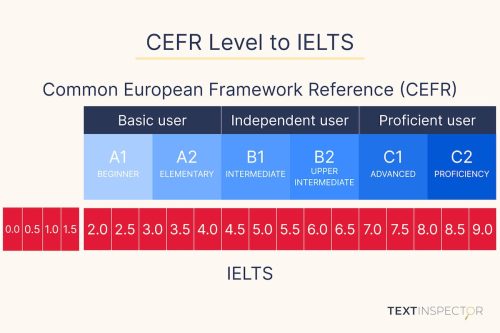5 Things you should know about big data in NLP (Natural Language Processing)
15 September, 2023

In this article, we will explore Natural Language Processing (NLP) and Big Data. Discover how vast datasets fuel NLP applications, improving accuracy and driving valuable insights. Let’s explore what data is, why it’s crucial in today’s world, and how it’s revolutionizing NLP.
In today’s digital world, data is a critical component of every aspect of our lives. From the personal data we generate as we go about our daily activities to the vast amounts of data that businesses collect, analyze, and use to drive decision-making, data has become an essential resource for individuals and organizations alike. First, let’s take a look at what data actually is.
1). What is data?
In simple terms, data refers to any information that can be stored and processed by computers. Data can be in the form of text, numbers, images, audio, or video, and it can be either structured or unstructured.
Structured Data
Structured data is highly organized and can be easily stored and processed using traditional relational database management systems. Structured data follows a specific format, which allows it to be easily analyzed and compared. Examples of structured data include financial reports, spreadsheets, and databases.
Unstructured Data
On the other hand, unstructured data is more complex and difficult to manage as it does not follow a specific format, and it may contain a wide range of information. Examples of unstructured data include social media posts, emails, videos, images, and audio. Unstructured data can contain valuable insights, but it is more challenging to analyze and extract meaningful information from it.

2). Why is data so important nowadays?
Data has become increasingly important in today’s world because of the explosion in the amount of information that is being generated every day.
For example, data is generated in social media, sensors, mobile devices, and internet-connected devices, and it contains valuable insights and information that can be used to drive business decisions, improve products and services, provide better customer experiences, and much more.
Data is critical for businesses to stay competitive in today’s marketplace. By analysing customer data, companies can gain a better understanding of their target audience, their preferences, and their behavior. This information can then be used to develop more effective marketing strategies, improve customer engagement, and create products and services that better meet their needs.
3). What is Big Data?
Big data refers to the large and complex sets of data that cannot be processed and analyzed using traditional data processing tools and techniques. Big data is characterized by its volume, velocity, and variety, which make it difficult to manage and analyze. The volume refers to the vast amounts of data that are generated every day, while velocity refers to the speed at which data is generated and processed. Variety refers to the diverse sources of data, including structured and unstructured data, that make up big data.
4). How is data and big data used in NLP applications?
First of all, what is Natural Language Processing? Natural Language Processing (NLP) is a field of Artificial Intelligence (AI) that focuses on enabling computers to understand and interpret human language. NLP applications are used in a wide range of industries, including healthcare, finance, and customer service.
Data is a critical component of NLP, as it is used to train machine learning models to recognize patterns in human language and to develop algorithms that can understand and interpret text.
In recent years, the availability of large amounts of data has significantly improved the accuracy and effectiveness of NLP applications, and so big data in NLP has become increasingly common.
With the rise of social media and other digital communication channels, there is an abundance of text data available that can be used to train NLP models. This data can be used to improve the accuracy of machine learning algorithms, enabling them to better understand the nuances of human language and to provide more accurate responses. NLP models can now analyze more data than ever before, allowing them to identify patterns and trends that would be difficult or impossible to detect using traditional data processing methods.
Big data in NLP can help models overcome biases that may be present in the data, leading to more inclusive and accurate models, due to its amount and variety.
One of the significant impacts of big data in NLP applications is the ability to process unstructured data. Unstructured data such as social media posts, customer feedback, and online reviews contain valuable information that can be used to improve NLP models. However, due to their complexity and large volume, unstructured data is often difficult to analyze and extract insights. Big data tools and technologies such as Hadoop, Spark, and NoSQL databases provide powerful tools for processing unstructured data and extracting insights from it.
Moreover, data is being used to develop new NLP applications that can extract insights and meaning from unstructured data.

One practical example of this: sentiment analysis algorithms can analyze social media posts and other forms of online communication to determine the overall sentiment of a particular topic. Sentiment analysis is a type of NLP application that aims to determine the emotional tone or sentiment expressed in a piece of text, such as social media posts or customer reviews.
In the past, sentiment analysis relied on a limited set of data and manually created dictionaries of positive and negative words to detect sentiment. However, with the advent of big data, sentiment analysis can now analyze vast amounts of unstructured data, such as social media posts, customer feedback, and online reviews, to detect patterns and trends in sentiment across different demographics, geographic regions, or time periods.
By processing and analyzing such large volumes of data, NLP models can improve their accuracy in detecting and interpreting sentiment. For example, with big data, NLP models can now identify more subtle forms of sentiment, such as irony or sarcasm, that were previously difficult to detect.
Big data can be immensely helpful in improving linguistic research, such as scorecard development for the Common European Framework of Reference for Languages (CEFR). Here are a few ways in which big data can be leveraged to improve linguistic research:
- Corpus Analysis: Big data can be used to create a large corpora of speech or written language from different regions, dialects, and socio-economic backgrounds. This corpus can then be analyzed using various linguistic tools and techniques to identify patterns, trends, and linguistic features that are common across different regions or social groups. This can help researchers to understand how language varies across different contexts and can help in identifying patterns.
- Machine Learning: Machine learning algorithms can be used to analyze large amounts of language data to identify common features, patterns, and structures. For example, natural language processing (NLP) algorithms can be used to analyze written or spoken language to identify grammatical structures, syntactic patterns, and common collocations. This can help researchers to identify commonalities across different languages and to develop more accurate scorecards for the CEFR.
5). How do companies use big data in NLP applications such as Text Inspector?
Text Inspector is an NLP tool that helps users analyze and improve the quality of their writing. It allows users to compare their texts against large datasets such as the British National Corpus (BNC) and the Corpus of Contemporary American English (COCA).
These datasets contain vast amounts of data that have been collected from various sources, including books, journals, newspapers, and online publications. By using such large datasets, Text Inspector can provide more accurate and reliable feedback, making it a valuable tool for anyone who wants to improve their writing skills.
This all comes together in Text Inspector’s “Scorecard”, which provides users with an overall score based on the Common European Framework of Reference (CEFR) for reading, writing, or listening texts. Importantly, Text Inspector also provides a breakdown of all of the different metrics which have gone into calculating the overall CEFR score. This information can be used to identify areas for improvement and to track progress over time, helping users to achieve their language goals and more importantly allowing teachers to create authentic, individualized materials for the classroom.

Conclusion
Overall, data is an incredibly important resource in today’s world, and big data in NLP and other Artificial Intelligence (AI) has a significant impact on technology. As vast amounts of data are generated every day, big data in NLP has become a critical factor in making informed decisions for businesses and organizations to stay competitive.
Furthermore, data plays a crucial role in the development of machine learning models for NLP, which can understand and interpret human language more accurately and effectively. With the ever-increasing amount of data available, the impact of big data in NLP and other AI technologies will continue to grow.
The growth of data will lead to new and innovative applications, which will shape the future of linguistics and language processing. Thus, data is considered a vital component in the development and advancement of NLP and other AI technologies, and it will continue to shape their future applications.
Share
Related Posts

How to convert your CEFR Level to IELTS
20 February, 2024
The CEFR is one of the most commonly used measures of students’ foreign language abilities. However, there are several other tests and measures for English as a Second Language, including the IELTS. In this article, we will discuss how to convert your IELTS scores into CEFR levels, what each level means and how this can be useful for your exam preparation.
Read More ->
Bilingualism in the Workplace: More than just Two
15 November, 2024
In a world where cultural insight is as essential as technical know-how, bilingualism goes beyond […]
Read More ->
What Is The CEFR Level of Harry Potter? (Part 1)
12 May, 2025
The Harry Potter series is not only a global literary success but also a valuable […]
Read More ->